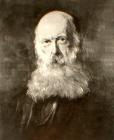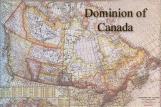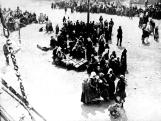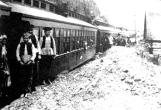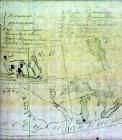6
Ongoing correspondence between Lev Tolstoy and Peter Verigin of the time reveals that a lack of confidence existed that the Doukhobors would ever be able to maintain their religious attitudes and practice while in Russia.Simultaneously, the Russian authorities were now agreeable to releasing these dissidents who, for centuries, had caused nothing but problems for the Russian authorities. Russia now agreed to let the majority of them leave, if they paid for their own passage, and on condition that they would never be allowed to return.
7
Tolstoy completed a novel that he had been working on and donated the proceeds of 'Resurrection' to aid in emigration expenses, and he also raised other money from his wealthy friends. Other donations were collected, (the Quakers being one of the largest financial contributors). Canada, hungering for settlers for the yet-to-be cultivated western prairies, agreed to accept the Doukhobors. It was apparent that they were skilled and hardworking knowledgeable farmers. The Dominion of Canada wanted the Doukhobors and negotiated with the 'Tolstoyans' who represented the Doukhobors' interests from a humanitarian standpoint.8
Desperate to leave quickly, without proper investigation, some of the Doukhobors were able to leave for Cyprus. Not being too far from the port of Batum, in terms of cost, it was bearable. By summer of 1897 the Quakers and Mennonites had raised enough for the first contingent of slightly over 1100 Doukhobors to leave. What the Doukhobors did not count on was that the climate was not hospitable, and nor was the soil for this agriculturally dependent sect. Malaria and dysentery were just some of the diseases that claimed over 10 percent of the Doukhobors that tried to make Cyprus home. The remainder left Cyprus quickly when the opportunity presented itself.10
These 'Tolstoyans' included Tolstoy himself and a few of his distinguished associates, Tchertkov, Birukov and Tregubov. (The latter three were themselves exiled for their efforts). The well known anarchist, Prince Peter Kropotkin, a veteran of Siberian exile had suggested the Canadian location. There were a few other choices at the time to where the Doukhobors could emigrate; Texas had been discussed, as was Hawaii, Brazil, Argentina, Georgia, and even China. James Mavor, a professor at the University of Toronto, corresponded with the Tolstoyans. Mavor in turn began negotiations with the Minister of Interior, Clifford Sifton, and through Sifton, the Dominion of Canada agreed to the Doukhobors' requests.12
New BeginningsIn 1898 an agreement was reached with the Dominion of Canada which guaranteed the simple conditions the Doukhobors requested: they were not to be required to perform military service, they could farm their land communally with land held in common or 'en bloc', and they would retain control of the internal affairs of their villages.
The 'conscientious objector status' given was the same as the Quakers, Tunkers, and Mennonites had been earlier granted - meaning if war ever broke, the Doukhobors would have the right to refuse to fight or bear arms by reason of their religion. The Doukhobors were advised however, that they would have to live according to the 'laws of the land' but were not advised that those laws might require them to swear an oath of allegiance - something the Doukhobors were not inclined to do.
14
After a long voyage that started on December 21st, 1898, the first contingent of 2,134 Doukhobors arrived in Halifax, Canada, which then proceeded to St. John, New Brunswick on January 24th 1899. Ten Doukhobors died en route, but with spirits high and hopeful, they were greeted by Quakers, newspaper reporters, James Smart, the deputy minister of the interior and other distinguished onlookers. All were duly impressed with the health of the Doukhobors, their behaviour, their singing, and the cleanliness of their ship (which they had fastidiously maintained and cleaned during the month-plus voyage).The S.S. Lake Huron then sailed to St. John where this group would take five trains to western Canada. (Some passengers of the S.S. Lake Huron were to remain in quarantine in Halifax).
16
By the end of June, three more shiploads arrived - one, the S.S. Lake Superior landed a few days later on January 27th, but these immigrants were held in quarantine in Grosse Isle until February 27th. Then one more shipload on May 9th (again, the S.S. Lake Superior), and one on June 5th, (the Lake Huron), arrived in Quebec City (13 cases of smallpox were recorded and the contingent was quarantined on Grosse Isle for nearly a month).This was the largest contingent of 2,318 Doukhobors, making for a total of over 7,400 - the largest number of immigrants ever to arrive at one time. These ships were privately chartered from the proceeds garnered by the Tolstoyans and donations from the Quakers.
18
The first contingent arrived about 4 days later in Winnipeg by train. The first few weeks were spent in various immigration halls and the Doukhobors immediately began hiring themselves out. Women took in wash - men worked on everything from shoveling snow to cutting firewood.This simple act incited anger from the Canadian working class who would not work for the Doukhobors' meager wages. But the Doukhobors were hard working - and desperate as well. And it would not be the first time in Canada when jobs would be taken away by the Doukhobors who were willing to work for less than the going rate of wage.
